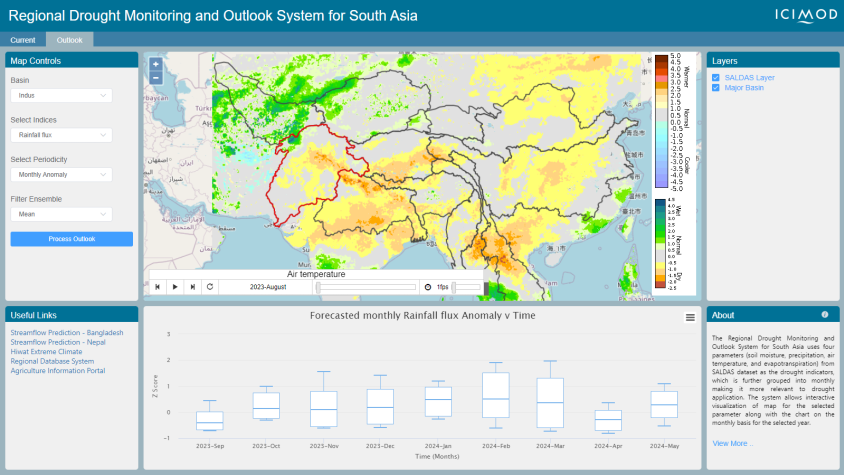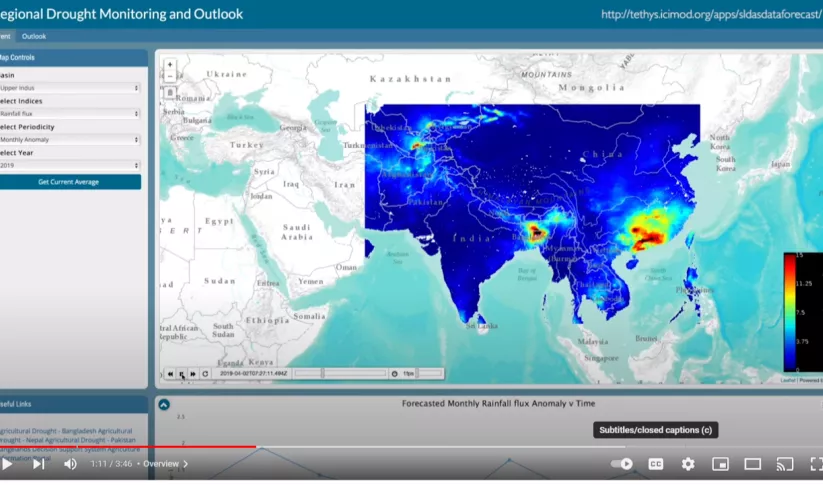Regional Drought Monitoring and Outlook System for South Asia

The Regional Drought Monitoring and Outlook System (RDMOS) was developed in close collaboration with the John Hopkins University Applied Science Team (AST) and relevant national agencies to mitigate and adequately respond to drought vulnerabilities and enable informed decision-making. It is an operational service producing current and seasonal outlook of reliable drought indicators for the HKH region.
The system incorporates suitable earth observation (EO) data with land surface and seasonal climatic models to produce drought indicators. It produces drought indices of precipitation, temperature, soil moisture, evapotranspiration, and vegetation conditions at 10-day intervals for near real-time monitoring of droughts resulting in a strengthened capacity of national agencies to develop and disseminate that information. The RDMOS also provides seasonal outlooks at 4-month intervals to support drought management and preparedness processes. The RDMOS generates monthly indices on current and future outlooks of drought conditions with lead times of 1–6 months at 0.05° × 0.05° resolution. This capability has been in operation since April 2019 and has provided reliable outlooks of emerging seasonal water availability scenarios for the region.
Rationale
Drought can directly affect food availability and stability through impacts on production. Access to good quality drought monitoring and early warning information is critical to in-season crop management and efficient agro-advisory services. In recent decades, a large amount of climate information has been made available by scientific communities, but the use of this information for drought monitoring by decision makers at local and management levels remains low. Developing an operational drought monitoring and warning system in the HKH region has been further hampered by the lack of a reliable hydro-meteorological monitoring system, along with data gaps in different parts of the region.
-
Users
Ministry of Agriculture and Livestock Development, Government of Nepal
World Food Programme, Nepal
International Maize and Wheat Improvement Center (CIMMYT), Nepal
Bangladesh Agriculture Research Council
International Maize and Wheat Improvement Center (CIMMYT), Bangladesh
Ministry of Agriculture Irrigation and Livestock, Afghanistan
Pakistan Agricultural Research Council (PARC)
-
SERVIR HKH News/Resources
Reginal Drought Monitoring and Outlook System for South Asia - Quarterly updates (May 2020 - current)
Operationalizing a regional agricultural drought monitoring and early warning system
New drought monitoring system will reduce climate risks for South Asian farmers
SERVIR-HKH presents on Agriculture and Drought Monitoring at the 2017 AGU Fall Meeting


